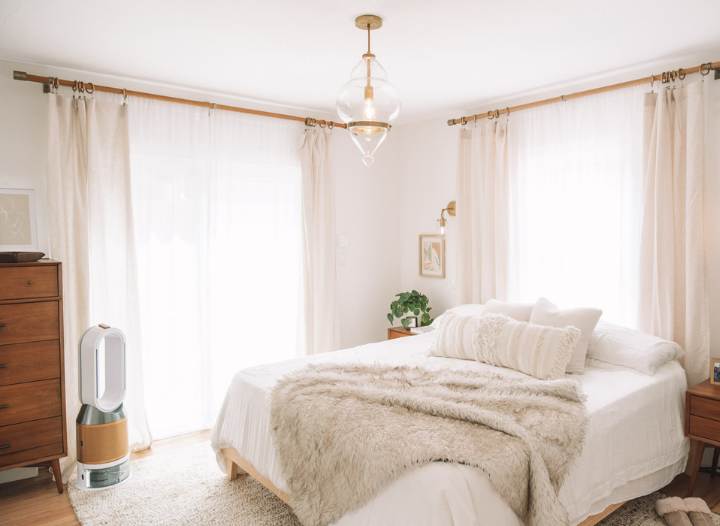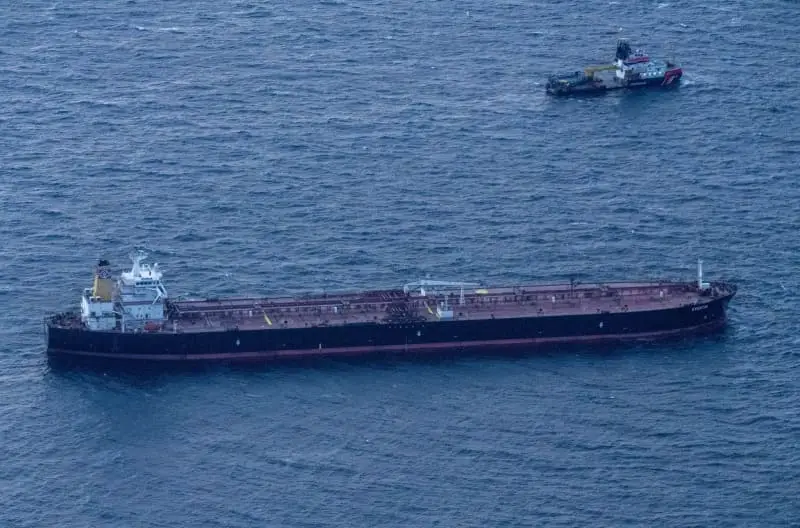Draw a horizontal line west across the globe from the northern coast of Estonia and it will pass through the southernmost tip of Greenland. Hence my surprise to be looking out on an Estonian beach and seeing sunny sand where children are playing while their parents get the picnics out.
My guide, Signe, is foraging along the line of vegetation between the sand and the pine trees.
“There will be wild strawberries here next month,” she says.
The sun sparkles out in the Gulf of Finland where a white sail appears. An old man sits on a log, methodically carving some driftwood into what looks like it might become a bear. Signe has found wild blackcurrant bushes and is picking the leaves, apparently they are good when added to pickled cucumbers. I wander along the foreshore, stopping to examine an old boathouse and some tracks, possibly of an elk, then watch a gang of wading birds tiptoeing around the giant boulders, ice-age leftovers, that are dotted along the coast. It could be a scene from Tove Jansson’s luminous idyll of Baltic beach life, The Summer Book.
My journey to Estonia had begun with a train from London to Vilnius, bus across Latvia, then bicycle up through Estonia to a bear-watching hide. Now I’m walking and driving along the Gulf of Finland coast, heading west from close to the Russian border towards my final destination, the Estonian capital, Tallinn.
Signe has got her blackcurrant leaves, but is looking doubtfully at a patch of ground-elder and nettle.
“It’s too late for this season. When the shoots are young, I chop them up with flour and egg then fry them. Delicious.”
I get the feeling that the beach is where Estonians reconnect with an older, slower style of life, a style that also involves quite a lot of eating.
Like Sophia, the main character in The Summer Book, Signe used to come here with her grandmother who always had an eye for wild seasonal produce.
“Spruce tips dipped in chocolate were a favourite,” she says.
The real culinary feast, however, is the berries. Wild strawberries in June are followed by cloudberries, lingonberries and raspberries, then by August come blueberries and cranberries. “But the best berries are not here,” says Signe. “They are up in the raised boglands. There’s a good one at Viru – we have to go there.”
That’ll be a squelchy, marshy misery, full of mosquitoes, I think. Let’s stick with the coast.
We are at the fishing village of Altja at the eastern end of Lahemaa national park which is formed by four peninsulas and bays. The plan is to explore westwards so we drive to Käsmu, a small seaside town with a big history.
In the 1880s this was an outpost of the Russian empire and the tsar built a customs house next to one of those ice-age giant boulders. These days it’s a museum, but not quite like any other. Inside we find the owner, Aarne Vaik, a white-haired professorial type, talking to a Japanese tour guide. The fame of this small quirky museum is spreading, and I am about to find out why.
“I’m originally from Tartu,” Aarne tells me, with Signe translating. “But when I came here in the 1980s, I became fascinated with the history of the town. It was renowned for the number of sea captains who lived here. At one time there were so many ships coming from places like Hull and Newcastle that sterling was legal tender.”
Inspired by the town’s 19th-century past, Aarne had started collecting maritime memorabilia and artefacts, tracking down anything from the captains’ uniforms and letters home, to their preferred tins of pipe tobacco (it was Waverley Virginia). As communism collapsed in the early 90s, the collection became impossibly vast and Aarne needed a home for it. The customs house had been a Soviet naval station. “I marched in and told them I was requisitioning it to be a maritime museum. In those crazy times, they just accepted it and moved out.”
The founding story somehow reflects the kick-ass eccentricity of both man and museum. The first room I enter is draped with dried herbs, oil paintings and maps. There are piles of antiquarian postcards, letters and books – a wonderful cornucopia of artefacts. There’s also a red setter asleep under a table laden with mysterious objets trouvés, a brass telescope and a half-eaten sandwich – this treasure-chest of a house is also home for Aarne and his wife, Triin.
Next door is a room that recreates a 19th-century sea captain’s parlour with original furniture and possessions. What’s his most prized exhibit, I ask. He rummages in a corner and picks out a black crusty sword. It’s a Viking weapon dug from a bog by a local farmer.
“It was dated to the 11th century, a period when the Vikings came through here en route to Byzantium.”
In another room I meet Triin, who shows me postcards and letters that the old sea captains sent home, then sepia-tinted photographs of the women they left behind, sometimes for years. “The women were so heroic and I’m proud that our museum includes their stories too.”
We move on along the coast, exploring villages of beautiful summer cabins buried in flower gardens. We have lunch in one, Restaurant MerMer, by the sea, then explore an abandoned Soviet submarine base at Hara. A top secret facility in its day, we scramble over broken concrete jetties and offices, the sea visible through holes in the floor. All the metal was looted after the Russians abandoned it in 1991. Now it’s becoming a seabird colony and graffiti archive.
Finally Signe asserts herself. We are going to Viru bog, it’s too good to miss.
after newsletter promotion
A couple of miles into the rolling wooded countryside, we park and walk through some trees. Let’s just get it over with, I’m thinking, five minutes should be enough.
We come to the start of a boardwalk that zigzags across a great dome of sphagnum moss. I find I am looking down on the forest: tiny stunted trees couched in a micro-world of water droplets, green starry moss and pink flowers. We reach an observation tower from which it’s possible to see a vast network of ponds, the black mirrors of water catching the puffs of white cloud. Birds and dragonflies move through. Back at ground level, Signe shows me how the “land” is just a sponge. “When we come to collect cranberries in August, we bring our winter snowshoes. Otherwise you’d sink.”
I’m starting to see the magic that Seamus Heaney captured in his poem Bogland:
The ground itself is kind, black butter / Melting and opening underfoot, / Missing its last definition / By millions of years
Raised bogs are formed as moss slowly builds up on top of itself until the entire landscape is lifted several metres above the water table and becomes exclusively rain-fed. Mineral levels then decrease and the giant sponge becomes acidic, creating a unique and wonderful environment, one that has its own lexicon. Water running off the burgeoning dome creates ridges, or strings, where trees might grow. In between are flarks, elongated ponds of dark water that drain down into a lagg, a wet rim. And at the centre, as we discover, is a central pond, the kolk or bog-eye, a name that captures its fathomless pupil-like darkness.
Around the soft, treacherous edges are carnivorous sundew plants, the sun sparkling on their pinky-green jaws. With no nutrients or soil, these plants have evolved to capture insects that are drawn to the water. Europe was once full of such places, but relentless plundering for peat has made them rare. Swimming in these ponds is a special experience: like diving into a black mirror and becoming part of the bog world.
Today, however, I’ve left it too late. The warm sun has dipped behind the trees. I lie down on the boardwalk and examine the tiny cosmos of the bog close up. I test the surface with my hand. It’s soft and wet. My hand slides in and I wriggle my fingers through the layers of fibre. Perhaps somewhere down here is another Viking sword. I touch something. It’s only a fallen log, but in my mind it becomes a sword.
In Jansson’s book, nothing much ever happens, except moments like this. In one scene the girl, Sophia, finds her grandmother picking up bones from the beach and placing them in trees. She asks what she’s doing.
“I’m playing,” says the old woman.
Having been reluctant to visit, Signe has to drag me away.
I spend the night in a forest cabin on the coast, then next day explore the coast all the way into Tallinn. In the town I wander through the Telliskivi area, a former Soviet industrial zone, now reborn as an arts hub, centred on the Fotografiska building, a photographic gallery with a restaurant. But it’s the narrow alleys of the old town that finally draw me in, stopping to sit in the cool tranquility of the church of the Holy Spirit, its galleries and walls beautifully painted by 17th-century artists.
In the evening I head back to the sea, walking down to the old Gulf of Finland port facilities, the Noblessner, that’s been turned into a stylish neighbourhood of bars and restaurants. It’s a great area to spend an evening, finishing with a stroll along the seafront (there’s a fine maritime museum).
I gaze out across the Baltic towards Finland, the light of midsummer evening plays on the water. A necklace of terns dances past and I imagine Jansson’s characters, the grandmother and six-year-old Sophia, strolling along looking for things that have washed ashore, things to play with long into the white summer night.
Kevin was a guest of Visit Estonia, travelling to the Baltic states by rail. A four-day EURail or Interrail (for UK residents) pass costs about £245 (27 and under: £183, over 60s: £220). In Laheema, Kevin stayed at ööd mirror house forest cabins from £118; in Tallinn at Nunne Boutique Hotel, doubles from about £65







